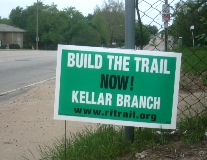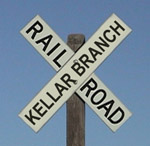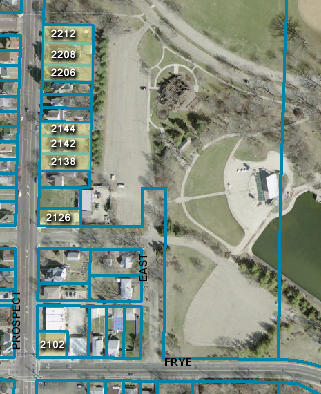The Journal Star is reporting that some area non-profit businesses are concerned about the possibility of the City Council imposing a 5% utility tax on water:
With the City Council weighing a possible 5 percent utility tax on water, not-for-profit organizations such as hospitals, colleges and local governments like the Peoria Park District are examining how they can absorb a cost that could impact their operations….
Chief financial officers at the city’s cash-strapped hospitals — OSF Saint Francis Medical Care Center, Methodist Medical Center and Proctor Hospital — say the proposed increase could lead to operational changes within their organizations….
St. Francis spends about $600,000 each year on water. A 5 percent utility tax would increase the expense by $30,000, Harbaugh said.
At Methodist, the hospital’s water bill ran about $300,000 last year, and the proposed increase would mean an extra $15,000 to $20,000 a year in expenses, said Cal MacKay, the hospital’s senior vice president and CFO….
Peoria Park District Director Bonnie Noble said her district is estimating a 24 percent increase in water rates for next year, or an additional $60,000 tacked onto a typical annual water bill of $250,000. She said costs for park services could go up if the water utility costs spike.
“We’d have to spread the costs,” Noble said. “You just can’t keep absorbing these kind of things and run the same kind of operation you’ve run before.”
Three entities are looked at in detail here: OSF, Methodist, and the Park District. And we have an estimated annual increase in water bills for each entity: $30,000 for OSF, $15-20,000 for Methodist, and $12,500 for the Park District. Note on the Park District’s quote that the $60,000 figure listed in the article included Illinois American Water’s rate increase, which is outside the city’s control and was not figured into the OSF or Methodist figures. So, to compare apples with apples, I took the city’s proposed 5% fee times the Park District’s annual water bill of $250,000.
Now let’s take a look at some other recent news stories about these organizations (emphasis added):
The new OSF Center for Health at Glen Park will be open to the public Sunday. The 53,000-square-foot facility is set to open its doors after 19 months of construction on the $18 million project, which includes three buildings on the campus featuring 24 primary care physicians.
–June 12, 2009
On an average day, 200 tradesmen work on the hospital’s [OSF’s] $280 million Milestone Project, designed to modernize and expand the center and Children’s Hospital….
–January 17, 2009
What’s the monthly debt service on $298 million? I think it’s safe to say that one monthly payment alone dwarfs the $30,000 annual increase in costs that could result from the city’s imposition of a water utility fee. $30,000 is a rounding error for OSF.
Methodist Medical Center will delay the final two stages of its $400 million hospital renovation project until tight conditions in the credit market begin to loosen, CEO Michael Bryant said Thursday…. Methodist will continue with the first two phases of its massive renovation plan, which carry a combined price tag of nearly $30 million and include building a parking deck and constructing a new entrance to the hospital off Hamilton Boulevard.
–November 7, 2008
The same goes for Methodist. Even a more modest principal amount of $30 million will result in monthly debt service payments that go way beyond the predicted annual increase of $15,000 to $20,000. To put this increase in perspective, a single birth can cost a patient that much money.
But here’s my favorite:
In anticipation of shrinking revenues, the Peoria Park District will cut its budget for the rest of the year by $390,000, but the public will not be overly affected. “On a $40 million budget, this is less than 1 percent,” said Jan Budzynski, the park districts’s superintendent of finance and administrative services.
March 3, 2009
So, let me get this straight: Cutting $390,000 out of the park district budget is no big deal — it’s less than one percent of the budget and “the public will not be overly affected” — but an increase of $12,500 in water fees is going to be difficult to absorb — so much so that they’ll have to raise the cost of park services? [Insert “Dueling Banjos” music here.] It probably goes without saying, but the Park District can’t have it both ways.
It sounds to me like all these protests are pretty weak. If an attempt is being made to garner opposition to the water utility fee, this isn’t the way to do it. These large organizations with their conspicuous building projects aren’t going to get a lot of sympathy from the public. In fact, hearing how little this fee would impact them monetarily, it actually makes me more favorable toward it.
 PEORIA — Attorneys for Wal-Mart Stores, Inc., have notified the City of Peoria, the Peoria Park District, and Peoria Public Schools (District 150) that their client wants to purchase “a portion of Peoria Stadium on War Memorial Drive … for the construction and operation of a Walmart Super Center.”
PEORIA — Attorneys for Wal-Mart Stores, Inc., have notified the City of Peoria, the Peoria Park District, and Peoria Public Schools (District 150) that their client wants to purchase “a portion of Peoria Stadium on War Memorial Drive … for the construction and operation of a Walmart Super Center.”
 My dad and I rode our bikes from Alta to downtown on as much of the vaunted new Kellar trail as we could find. Getting from Alta to Pioneer Parkway was easy enough. Then we followed the blacktop sidewalk/trail to Sommer street, and rode down to Candletree. There we got a little confused, as there’s a green sign that says “Bike Route” with an arrow pointing to the right. However, the Kellar trail actually continues to the left.
My dad and I rode our bikes from Alta to downtown on as much of the vaunted new Kellar trail as we could find. Getting from Alta to Pioneer Parkway was easy enough. Then we followed the blacktop sidewalk/trail to Sommer street, and rode down to Candletree. There we got a little confused, as there’s a green sign that says “Bike Route” with an arrow pointing to the right. However, the Kellar trail actually continues to the left.  I’ve been saying it ever since the sphynxlike Kellar Branch Corridor Corporation first appeared that its clandestine efforts were going to cost the taxpayers lots of money.
I’ve been saying it ever since the sphynxlike Kellar Branch Corridor Corporation first appeared that its clandestine efforts were going to cost the taxpayers lots of money. 